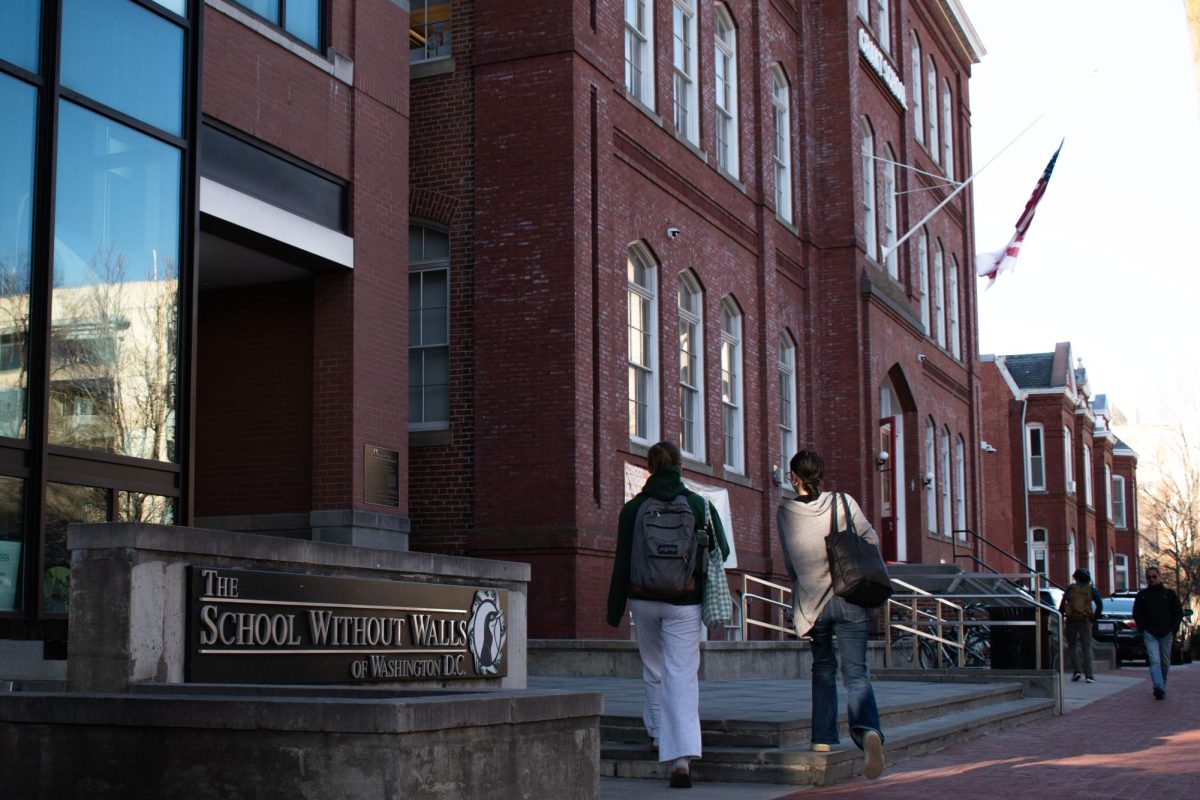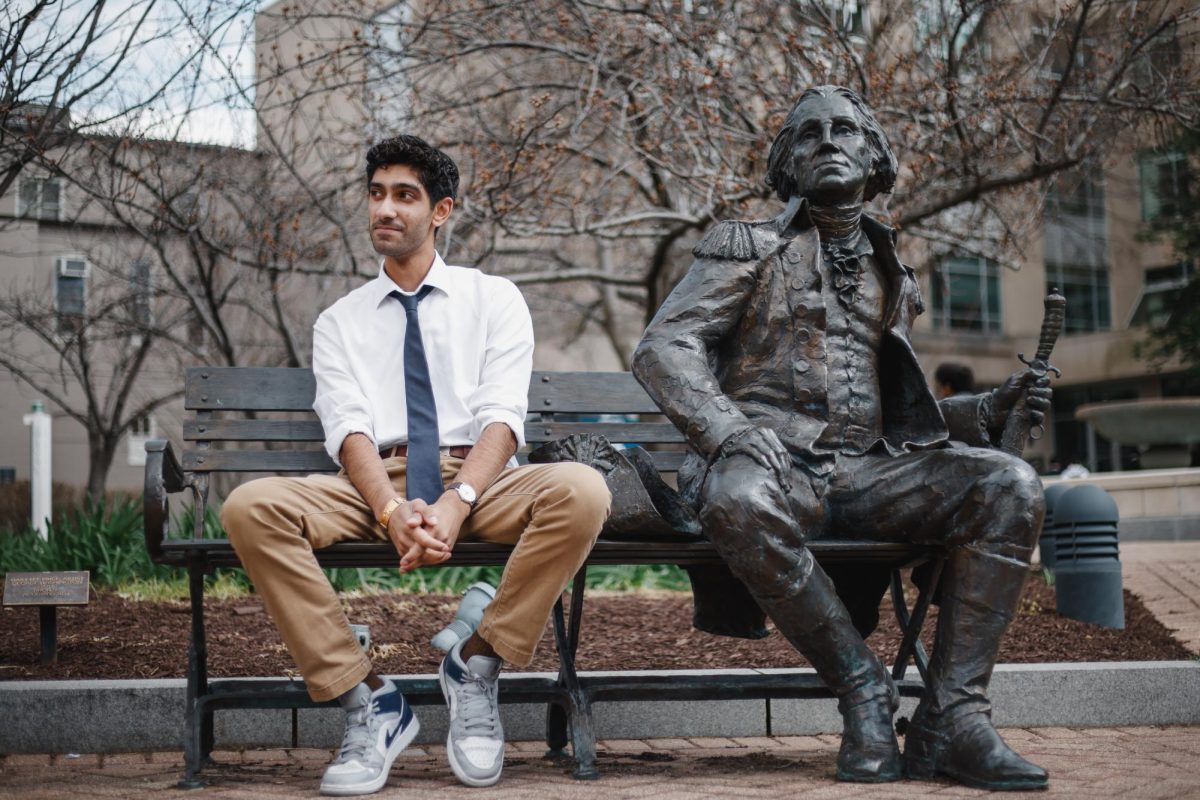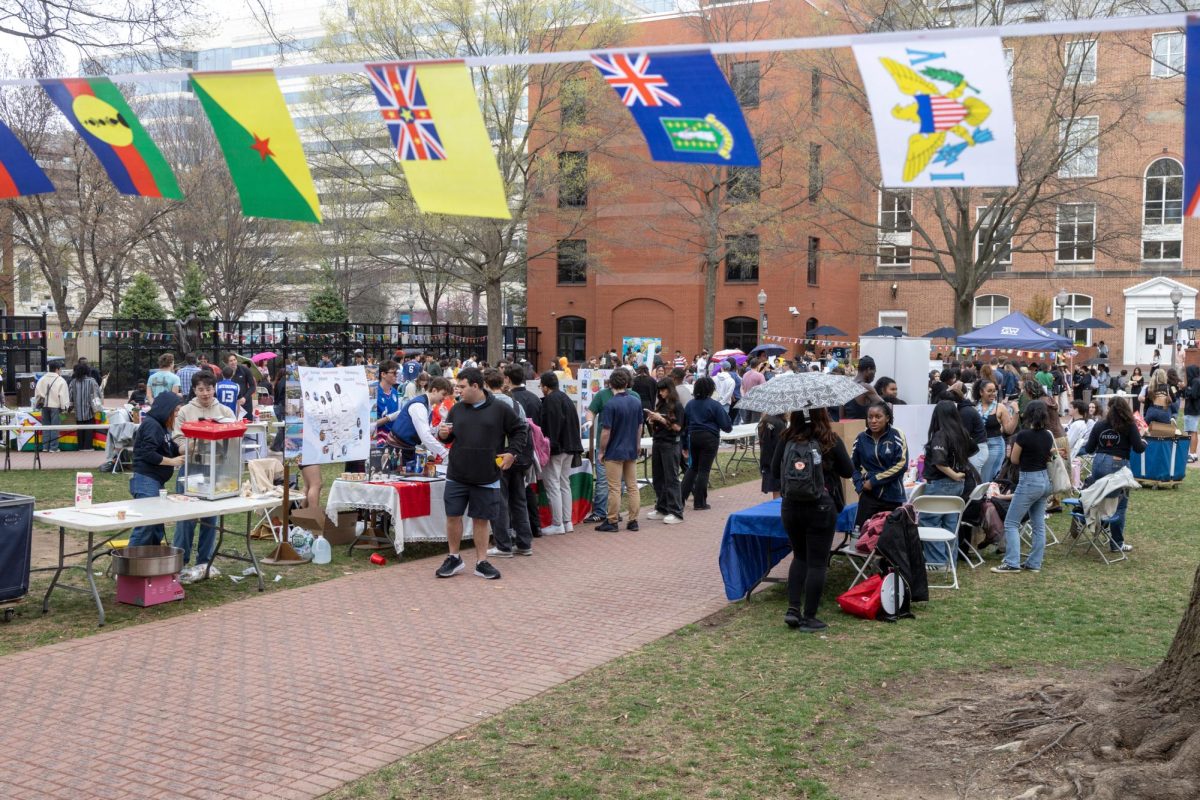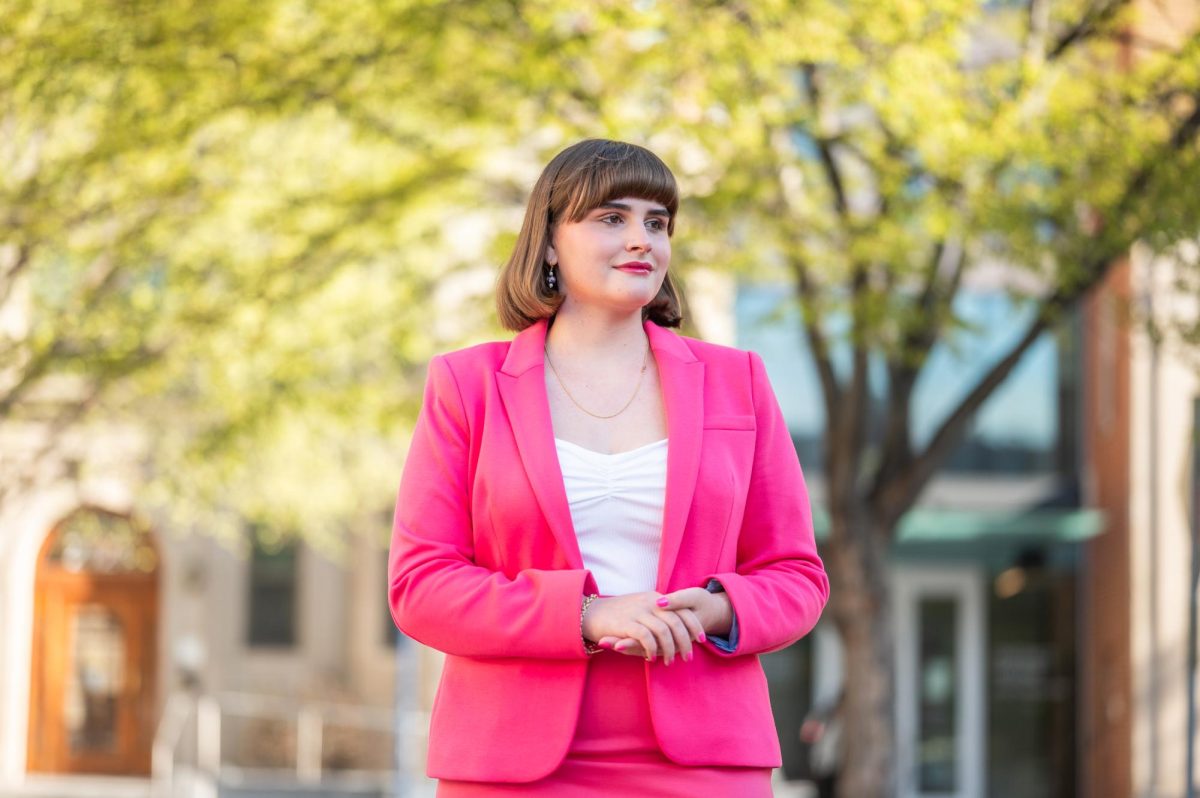A School Without Walls senior developed a resolution adopted by the D.C. State Board of Education last month to fix faulty heating, ventilation and air conditioning systems in public schools across the District after enduring fluctuating temperatures in her classrooms.
Anna Mayer, a student representative for the state board and a SWW student, proposed a resolution in February that called on city officials to better maintain public schools’ HVAC systems and boost temperature regulation system repairs. In adopting the resolution, the SBOE called for D.C. Mayor Muriel Bowser, the D.C. Council and the Department of General Services to allocate “sufficient funding” to repair broken HVAC systems in District public schools, including SWW, to improve indoor air quality standards.
The state board advises the Office of the State Superintendent of Education on educational matters and regulations proposed by the mayor or the Office of the State Superintendent of Education. When the state board adopted the resolution Feb. 19, it became an official state board policy recommendation for Bowser’s office and the D.C. Council to adopt and enforce.
Mayer said SWW classrooms can get too hot or too cold, and the lack of consistent temperatures is a “pretty big” concern among students, which she said is compounded by health and environmental concerns with HVAC systems.
“It’s just ridiculous,” Mayer said. “It’s outrageous to have to be a student and work in a classroom that is either 20 degrees too cold or 20 degrees too hot. It can be really frustrating.”
DGS as of March 29 has more than 87 high-priority open HVAC orders in public schools, including 4,000 total open work orders across D.C. public schools, according to the DGS HVAC dashboard. DGS considers heating and cooling issues high-priority HVAC orders, according to the dashboard. DGS completed 15 HVAC work orders in 2024, the dashboard states.
The resolution, which heard public SBOE testimony from students, parents, educators and experts on Nov. 20 and Jan. 15, recommends that Bowser, D.C. Council and DGS modernize HVAC systems, conduct biannual inspections and report indoor air quality monitoring.
It is now up to Bowser and the D.C. Council to act upon the recommendations presented in the resolution to see if Mayer and the state board’s efforts to improve DCPS’ HVAC systems can come to fruition. The resolution requests that Bowser, D.C. Council and DGS inform the SBOE in writing by May 31 the cost associated with their requests.
Bowser’s office and the D.C. Council did not return requests to comment on if they plan to enact the resolution’s recommendation into law. DGS did not return a request for comment on if they have plans to conduct biannual inspections and report indoor air quality monitoring.
Mayer said she’s proud of the work the state board put into the resolution, and she hopes legislators will heed the resolution’s recommendations to modernize HVAC systems.
“It’s not like there’s a roadmap that we have going forward, but I do think that this was a really good first step to establish the priorities and what we’re looking for,” Mayer said.
Before her work on the resolution, Mayer — one the co-founders of the School Without Walls Sunrise Movement hub, a branch of the national climate justice initiative — worked to help pass on Jan. 17 the D.C. Green New Deal, a resolution that addresses green initiatives in DCPS.
Mayer said she visited DCPS schools for the Green New Deal initiative, including McKinley Tech, Anacostia and Jackson-Reed high schools, to gather more information about sustainability issues facing the schools. She said at many of the schools she heard complaints about fluctuating temperatures in the HVAC systems, which prompted her to focus on HVAC in her next resolution.
“Not only are they often unsustainable, they also usually just don’t work and functionality is a really big problem,” Mayer said.
The resolution warned that the District is expected to experience temperature increases of up to 10 degrees by 2085, which the resolution states will pose “a serious risk” to the District’s public schools if they don’t maintain proper cooling infrastructure.
Yeselyn Iraheta, a sophomore at the SWW, spoke in support of the resolution to improve air quality in public schools at the SBOE’s public meeting on Feb. 19. Iraheta said the broken HVAC system at the SWW led to extreme temperatures that impairs her ability to concentrate in class.
“I’ve personally experienced an hour-long class while wearing a jacket and wishing I had my gloves,” Ireheta said. “These are moments of learning that are stolen because of faulty infrastructure.”
The resolution also states that improved air ventilation can mitigate health risks to students and staff in schools that are caused by elevated carbon dioxide levels, particulate matter and airborne pathogens. Health risks associated with indoor air pollutants include irritation of the eyes, nose and throat, headaches, dizziness and respiratory diseases, according to the Environmental Protection Agency.
“Investing in modern HVAC systems is not just about comfort. It’s about health and education,” Iraheta said. “Polluted air and extreme temperatures lead to decreased concentration, lower test scores and in severe scenarios, increased absenteeism among students.”
DGS said in a 2023 oversight hearing that DGS officials already conduct inspections and have a HVAC watch list, but they did not specify how often. Delano Hunter, the director of DGS said at a public meeting Jan. 15 that the organization invests “significant time and energy” in HVAC preventative maintenance.
Hunter said DGS can reduce indoor air pollution in public schools by changing air filters more frequently, monitoring air quality and collaborating with public schools to train critical personnel on maintaining HVAC systems.
“FY23 was the third year of preventative maintenance, and last year we saw a 45 percent decrease in emergency and high-priority HVAC work orders,” Hunter said in a live testimony at the D.C. SBOE on Jan. 15.





